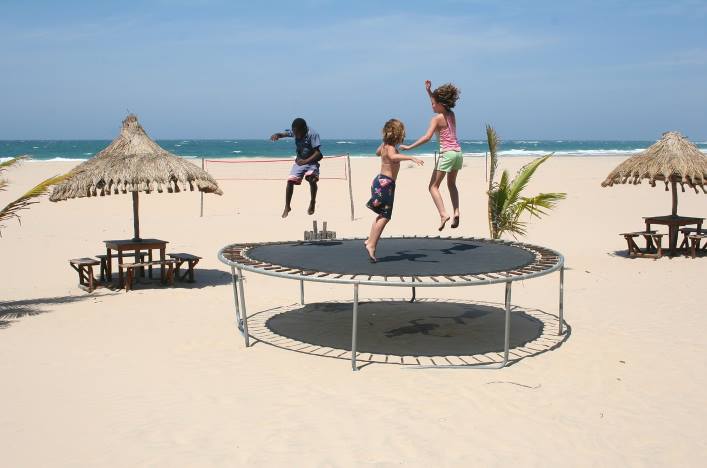
Most people have seen trampolines so many times that they don’t even think about them anymore. So many families have them in the backyard that they have become just another part of the suburban landscape, like swimming pools and swing sets.
But just how did trampolines come into being?
It helps to first know how a trampoline works, even if you’ve seen one many times. Fabric is stretched taunt over a frame that has springs, and then secured to the edge of the frame. The resulting potential energy in the springs is released when people bounce on the fabric, allowing them to defy gravity and fly high into the air.
Trampoline History: The First Trampolines
There’s no need to ask why trampolines were invented because you already know: they are fun. Like the invention of water slides, it was done just for the sheer enjoyment of using it.
Some of the earliest trampolines didn’t involve stretching fabric over a frame. Instead, people held the edges of the fabric taunt, allowing a (very trusting) person the chance to bounce high.
One of the earliest versions of this was invented by the Inuit tribe which inhabits Greenland, Canada and Alaska. They would toss each other into the air using a Walrus skin.
By 1887, the safety nets that firefighters hold to catch people jumping from burning buildings had been invented.
But it wasn’t until the 20th century that trampolines took a great leap forward.
Modern Trampolines
According to the Olympics website, the first modern trampoline was invented by the duo of George Nissen and Larry Griswold at the University of Iowa in 1934. Initially, the trampoline was used to train people for other things such as acrobatics and tumbling.
But, just like the Inuit before them, those who used the trampoline started to enjoy it just for the sake of the sensation of going up and down. Soon, it became popular to do not for training, but just for fun.
By 1942, the pair had started up a commercial trampoline-making business in Cedar Rapids, Iowa. As trampolines began to get mass produced, they became a popular item, particularly for families with space in their backyard.
Designs have progressed over time. An excellent modern day example is the Quad Power Jumper, available at AirFun Games in New Port Richey, Florida. Utilizing a bungee and a trampoline, it allows users to get as high as 20 feet in the air. That gives people plenty of space to do somersaults and flips.
Trampolines have also been used to train astronauts and pilots, getting them used to their bodies being in different positions. And in 2000, “trampolining” became an official Olympic sport, with two events, one for men and one for women. It remains an Olympic sport to this day.
Where will trampoline be used next? That’s hard to say, but there’s no denying the fun of simply jumping on one. Take a tip from the Inuit tribe and do it just for the sake of enjoyment!

